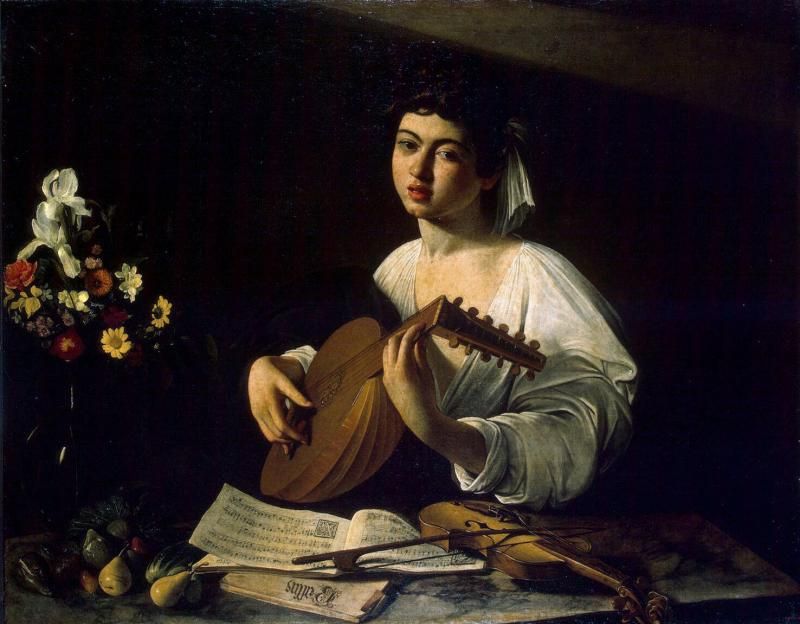
jack - 12-20-2014 at 08:22 PM
Came upon this so I thought I'd share it for those interested in the historical aspects of lutes and ouds. This is from somewhere around 1620
apparently, in Belgium:
http://en.wikipedia.org/wiki/Jacob_Jordaens#mediaviewer/File:The_Fa...
bulerias1981 - 12-20-2014 at 09:54 PM
I love this painting by Caravaggio (1596), I have a print of this in my shop.

majnuunNavid - 12-20-2014 at 11:17 PM
What strikes me the most about the design of these lutes are the ribs... Iranian Oud makers build Ouds with the ribs in this fashion. You can see an
example in this video that fadel put up when he was in Iran.
http://youtu.be/A-AVkxoZAxs?t=1m14s
jdowning - 12-21-2014 at 06:31 AM
The curvature or shallow 'fluting' in lute ribs occurs naturally in thin ribs that are relatively wide (numbering 7, 9, 11 or 13) and is due to the
balancing of stresses in the rib when bent longitudinally - the counteracting transverse stresses in the bent rib causing the free edges to curl
upwards (known as anti-clastic bending in engineering terminology).
For bowls with narrow thick ribs this phenomenon is not usually noticeable. On some of the old lutes with 31 or more narrow ribs, the makers 'fluted'
the ribs with a curved scraper - as do some lute and oud makers today. Some of the surviving 'Baroque' guitars of the 18th C and mandolins also have
narrow ribs fluted with a scraper.

